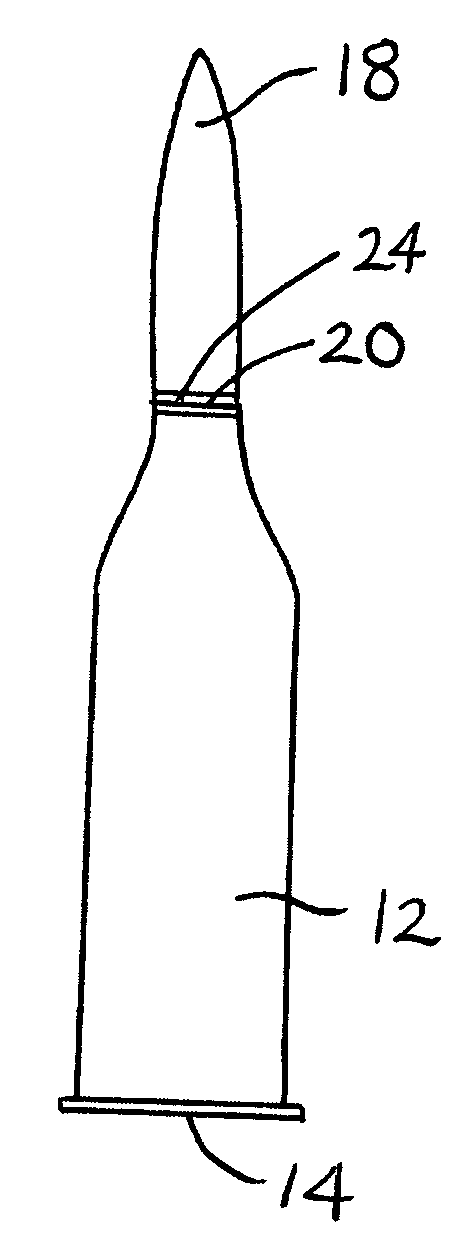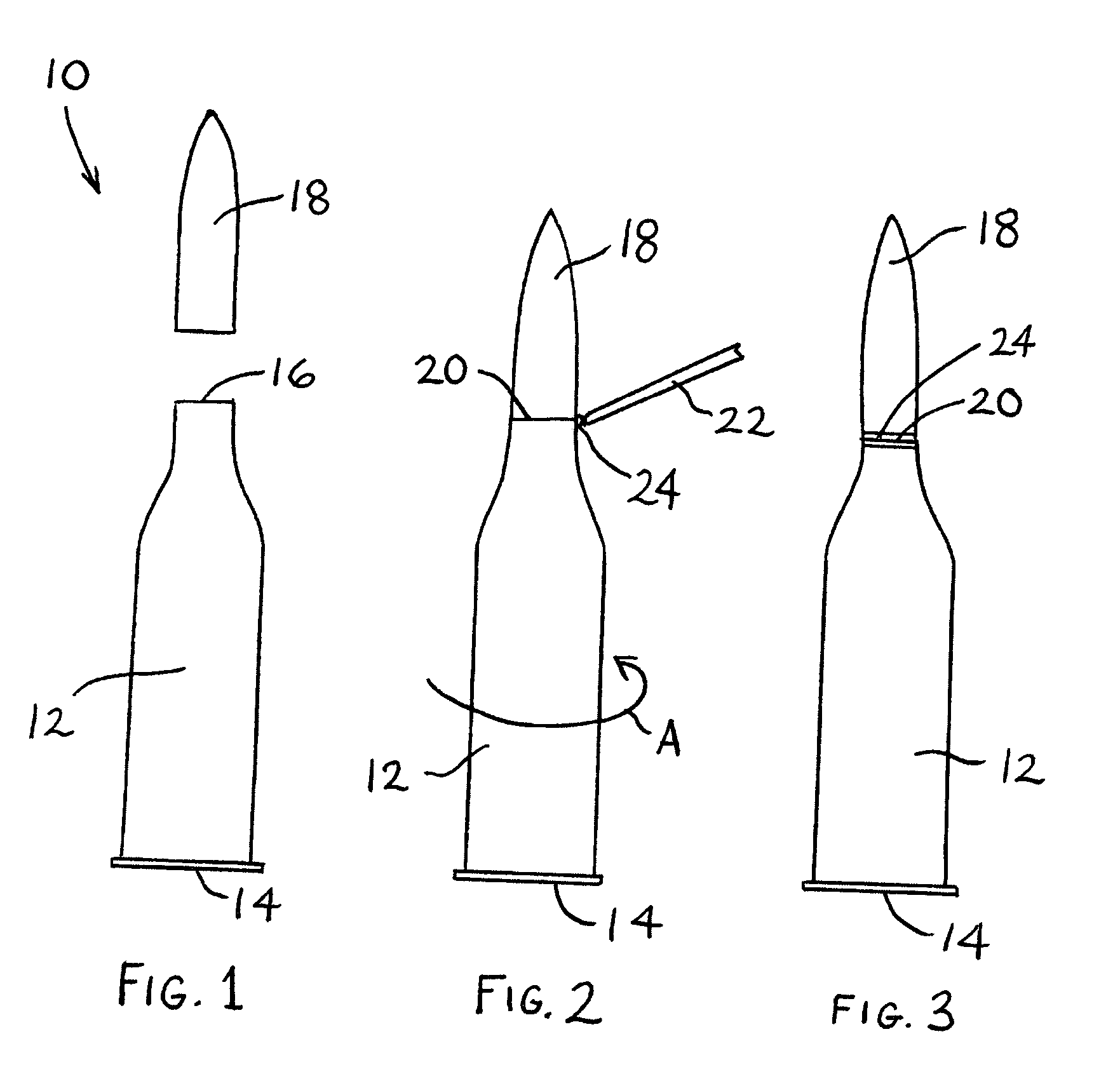Ammunition articles comprising light-curable moisture-preventative sealant and method of manufacturing same
a technology of light-curable moisture-preventive sealant and ammunition articles, which is applied in the field of ammunition articles, can solve the problems of small gap between the casing and the bullet, compromising the safety of the ammunition user, and easy moisture incursion of the articles
- Summary
- Abstract
- Description
- Claims
- Application Information
AI Technical Summary
Benefits of technology
Problems solved by technology
Method used
Image
Examples
example 1
[0055] Product acceptance qualification tests are utilized for determining acceptability of ammunition articles produced in accordance with the invention.
[0056] In all cases, the sealant is applied by either a brush or roll-on coating, or as a fine bead applied with a hypodermic needle. The sealant is applied at the location where the bullet and the casing meet and form a ridge. The ammunition with the applied, uncured sealant then is placed into a support system that holds it vertically as it passes under an ultraviolet light.
[0057] The ultraviolet light source is a 10-inch wide, 600 watt per linear inch, medium pressure, mercury UV lamp, manufactured by Fusion Corporation (Rockville, Md., USA). The focused light from this lamp produces a concentrated beam that is one-half inch wide on the surface of a conveyor.
[0058] The conveyor speed is set at 100 feet per minute. At this speed, each ammunition article is exposed to the beam of ultraviolet light for 0.025 second. A single pas...
example 2
[0061] A first sealant formulation (Sealant A) was made up having the following composition.
Wt. %Ingredient35.0%CN 131 low viscosity aromatic monoacrylate (Sartomer Co.)23.3%CN 292 polyester tetraacrylate (Sartomer Co.)38.8%CN 704 acrylated polyester (Sartomer Co.) 2.9%Irgacure 184 photoinitiator (Ciba Specialty Chemicals, Inc.)
[0062] A second sealant formulation (Sealant B) was made up having the following composition.
Wt. %Ingredient14.6%CN 983 urethane acrylate (Sartomer Co.) 9.7%CN 131 low viscosity aromatic monoacrylate (Sartomer Co.)14.6%CN 704 acrylated polyester (Sartomer Co.)58.3%SR 9209 trifunctional methacrylate (Sartomer Co.) 2.9%Irgacure 184 photoinitiator (Ciba Specialty Chemicals, Inc.)
[0063] A third sealant formulation (Sealant C) was made up having the following composition.
Wt. %Ingredient24.3%SR 306 tripropylene glycol diacrylate (Sartomer Co.) 4.9%CN 292 polyester tetraacrylate (Sartomer Co.)29.1%CN 704 acrylated polyester (Sartomer Co.)38.8%SR 9209 trifuncti...
example 3
[0067] Ammunition articles are made up and sealed in accordance with the procedure of Example 1, for each of the Sealant A-F formulations of Example 2.
[0068] Each of the Sealant A-F formulation-sealed ammunition articles was then subjected to the immersion test and the Instron® tensile tester holding power test of Example 1.
[0069] Each of the Sealant A-F formulation-sealed ammunition articles passed the immersion test and the Instron® tensile tester holding power test.
PUM
 Login to View More
Login to View More Abstract
Description
Claims
Application Information
 Login to View More
Login to View More - R&D
- Intellectual Property
- Life Sciences
- Materials
- Tech Scout
- Unparalleled Data Quality
- Higher Quality Content
- 60% Fewer Hallucinations
Browse by: Latest US Patents, China's latest patents, Technical Efficacy Thesaurus, Application Domain, Technology Topic, Popular Technical Reports.
© 2025 PatSnap. All rights reserved.Legal|Privacy policy|Modern Slavery Act Transparency Statement|Sitemap|About US| Contact US: help@patsnap.com


